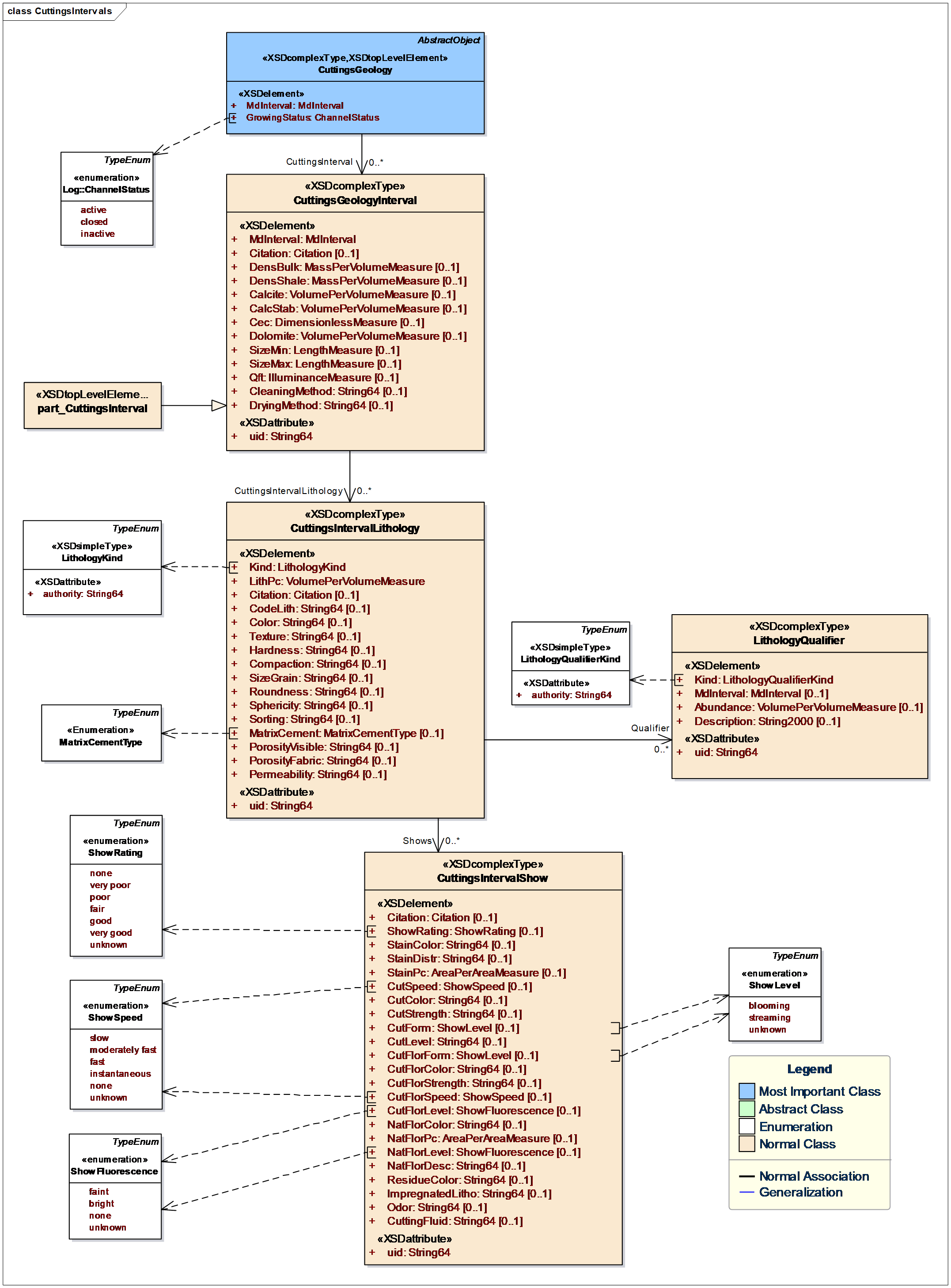6.1.1 Cuttings Geology Interval (CuttingsGeologyInterval)
| Topic Version | 1 | Published | 11/11/2016 | |
| For Standard | WITSML v2.0 | |||
A mud logging company takes regular samples of drilled cuttings while the well is being drilled and examines the cuttings to determine the rock types (lithologies) present and the presence of any hydrocarbon shows. The results of these observations and determinations are recorded and associated with the depth interval of the cuttings sample.
The cuttings geology interval object (Figure 6.1.1-1) is used to capture and transfer this information. The cuttings samples typically contain a mix of different lithologies in each sample because there may have been multiple rock types that were drilled within the sample depth interval and there can also be mixing of cuttings as they travel up the wellbore and are collected on the shale shakers. Therefore, the cuttings geology interval needs to have multiple cuttings interval lithology elements so that the percentages of each lithology in the sample, along with the more detailed geological description of each lithology, can be recorded.
Section 6.3 Appendix A for Wellbore Geology and Mud Log Report Data Objects : Hydrocarbon Evaluation (which is an appendix for this chapter) describes the procedures for performing an analysis of hydrocarbon show on the cuttings samples. These show tests are performed on individual cuttings of selected rock types and record the staining and fluorescence of the cuttings as observed under natural and ultraviolet light. To record the results of these tests, use the cuttings interval show sub-object (within the cuttings interval lithology element).
For realtime streaming of cuttings description data, transfer the cuttings lithology using the part cuttings interval object. For each cuttings interval described, create a new part cuttings interval object.
